13 main sights of Russia through the eyes of foreigners
Russia is an incredible country. This is not even a country, but a whole world in which there is everything - from masterpieces of architecture and a huge number of museums, to a wide variety of natural attractions - mountain lakes, geysers, glaciers and much more. It is incomprehensible to the mind how all this survived throughout the history of the world's largest country, rich in wars and uprisings.
Russians are rather strange people - they are proud of their history, but at the same time they can write a three-letter word on a monument. They are delighted with the nature of their homeland, but they are too lazy to clean up empty bottles after a picnic. Nevertheless, this is a great people with a difficult fate and attitude to life, which no philosophical concept can explain.
Foreigners go to Russia to check whether Dostoevsky, Tolstoy and Pushkin wrote the truth about it, and to see with their own eyes attractions this unique country. Here is a brief tour of the main ones.
1. Trans-Siberian Railway
Part of the world's longest railway, the historic section of the Trans-Siberian Railway stretches from Miass (a city in the Urals) to Vladivostok along the border with China and North Korea. It was it that Tsar Alexander III began to build in 1891, and his son Nicholas II completed what he started. 1916 The length of the oldest part of the Trans-Siberian Railway is more than 7000 km, and the total length of the railway line connecting Moscow with Vladivostok is 9288 km.
Most travelers use the train for an overnight stay, there are first, second and third class beds, the most expensive compartments have separate showers and toilets.
2. Elbrus
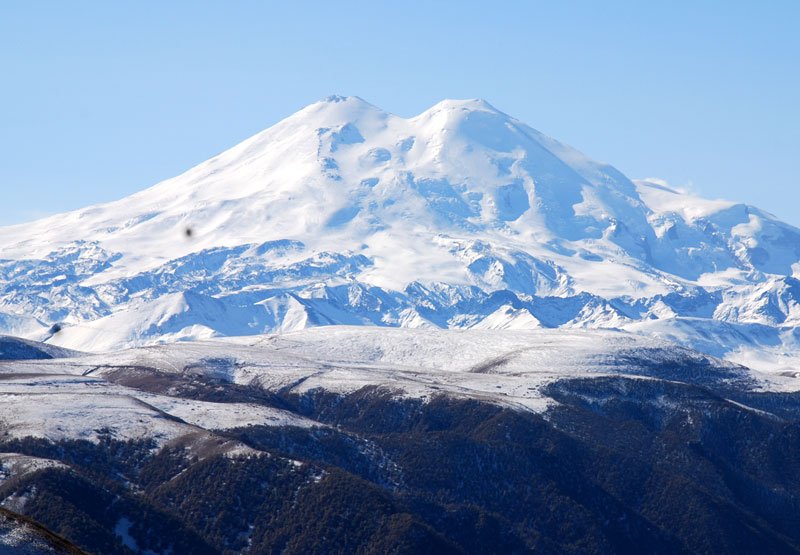
Mount Elbrus with a height of 5642 meters belongs to the Caucasus Range, located in southern Russia. Elbrus is included in the Seven Peaks - the highest mountains located on different continents of the planet. This is the highest mountain in Russia, and thousands of beginners and experienced climbers come here every year.
Previously, Elbrus was a volcano, but not a single eruption was recorded, so it is believed that it has died out forever. You can get to the mark of 3800 meters by cable car, which is very convenient. At an altitude of 4130 meters, the Shelter of the Eleven hotel used to be located, which burned down in 1998, and a new building is currently under construction.
3. Valley of Geysers

The Russian Far East is an amazingly beautiful and unusual place. There are a lot of unique natural attractions here, one of which is the Valley of Geysers on the Kamchatka Peninsula - the second largest geyser field in the world.
The valley was discovered in 1941 by Russian scientist Tatyana Ustinova, and since then many tourists and explorers have come here. The valley is included in the reserve, so there are certain rules for organizing excursions. The most convenient way to get to the Valley is by helicopter, but it is very expensive, so it is better to rent a helicopter with a company.
In 2007, a landslide descended into the Valley, after which it was flooded, but in 2013 a new landslide destroyed the natural dam, and the geysers began to clog again, there were even more of them.
4. Kizhi Island

This is one of the main attractions of the Republic of Karelia, located in the North-Western region of Russia, bordering Finland and washed by the waters of the White Sea. Since the 13th century, Karelians have been living here - the Finno-Ugric people, who found themselves at the junction of the cultures of the West and the East.
Kizhi Island is a real open-air museum, you will not find anything like local wooden churches anywhere else in the world. Especially beautiful is the 37-meter Church of the Transfiguration of the Savior with its 22 domes. The church was founded at the beginning of the 18th century and is entirely built of wood. In addition to it, there are wooden peasant houses, windmills, bell towers and barns. There are very few indigenous local residents, but they carefully preserve their traditions - weave various crafts from birch bark, do embroidery, sew national clothes, knit lace and sing folk songs.
5. Hagia Sophia in Novgorod
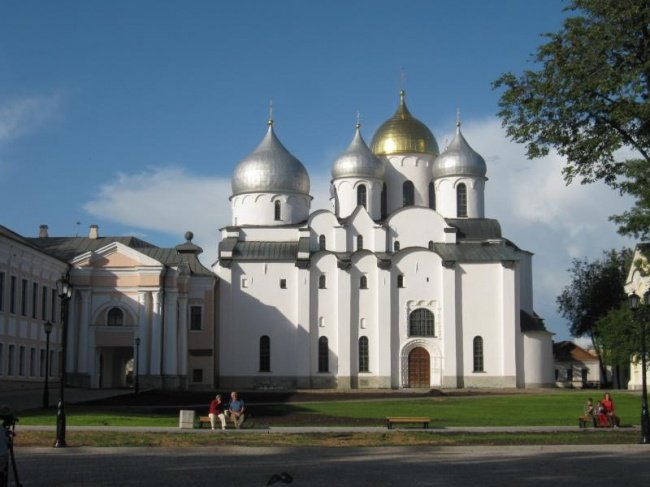
The church of incredible beauty is the main temple of Novgorod, a very ancient Russian settlement. The cathedral, in turn, is the oldest surviving church built by the Slavs, the construction of which was completed in 1050. Hagia Sophia is located on the territory of the Novgorod Kremlin, the height of the church is almost 40 meters.
The temple is crowned with five domes; several ancient Orthodox shrines are kept here, for example, the Icon of the Mother of God “The Sign”, which, according to legend, saved Novgorod from the attack of one of the princes in 1170. His army besieged the city, and when the inhabitants realized that they could not fight back, they began to offer prayers to the Lord. On the third night of the siege, Archbishop John heard a voice commanding him to take this icon out of the cathedral, and he followed the will of God. When one of the arrows of the besiegers hit the icon, tears flowed from the eyes of the Most Holy Theotokos, after which the besieging army threw down their weapons and ran away.
6. Lake Baikal
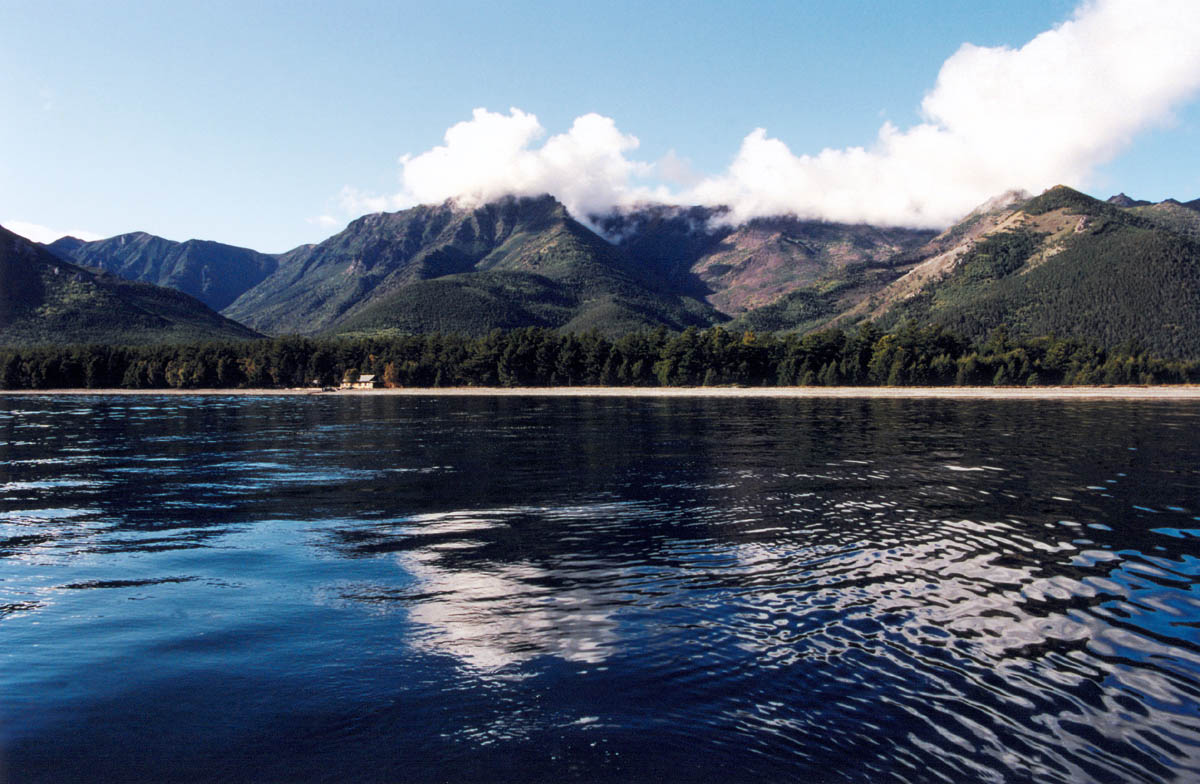
Traveling along the Trans-Siberian Railway and not enjoying the views of Lake Baikal is simply stupid. This ancient lake is the cleanest and deepest fresh water body of the planet. It contains 20% of the world's fresh water reserves, and the depth of the lake reaches 1642 meters.
Baikal was formed about 25 million years ago, and at present it is one of the most famous and beautiful reservoirs in the world. The lake is very large, so many locals call it the sea, and another common nickname is the Pearl of Siberia. If you decide to spend a few days here, you can stay in one of the tourist bases or rent a house, and for a very reasonable fee, and lovers of exotic holidays can put up a tent in some picturesque place on the coast.
Please note that the impressions of Lake Baikal will not be complete if you do not try smoked Baikal omul - this is the most delicious fish in the world.
7. Suzdal

The city of Suzdal used to be the capital of one of the principalities of Ancient Rus', and now it is part of the so-called Golden Ring of Russia - ancient cities that have preserved beautiful examples of medieval Russian architecture.
Each city of the Ring is unique in its own way, but Suzdal is just one big architectural masterpiece. There are many beautiful, surprisingly well-preserved cathedrals, churches and entire monasteries, and the famous Suzdal Kremlin is located in the very heart of Suzdal. Unfortunately, its wooden towers were destroyed by fire in the 18th century, but the earthen fortifications and several buildings still exist, so there is something to see.
Suzdal is like a huge open-air museum: walking along the streets, it is easy to imagine that you are in the distant past.
8. Moscow Kremlin
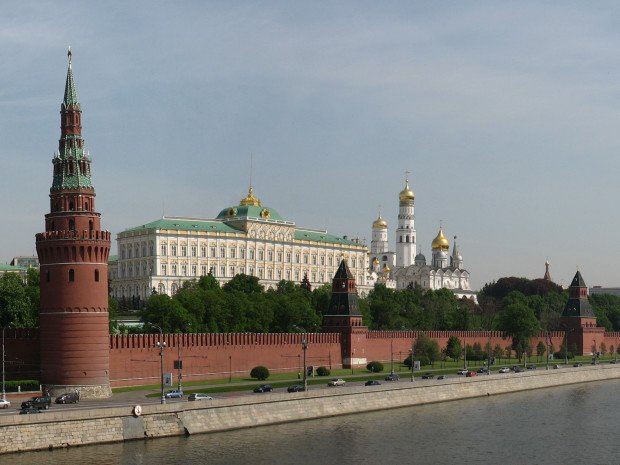
To describe the beauty of the unique buildings and relics of the Moscow Kremlin, there are not enough words even in the great and mighty Russian language. Located in the historical center of the capital of Russia, this architectural ensemble has long become the hallmark of the country.
The first wooden fortifications appeared here in the 12th century, and under the Grand Duke Dmitry Donskoy, the Kremlin became white stone - in the most important towers and fortifications, wood was replaced with white stone. By the way, the memory of this was preserved in the speech of the Russian people - Moscow is still sometimes called "white stone", although the Kremlin has long been "repainted" in red: Ivan III the Great (by the way, the grandfather of the first Russian Tsar Ivan IV the Terrible) ordered the best Italian architects, and they rebuilt the residence of the prince, using burnt bricks.
On the territory of 27.5 hectares there are the Palace of Facets (formerly it was the main front hall of the Kremlin), three cathedrals - the Assumption, Arkhangelsk and Annunciation, the Armory, the Ivan the Great Bell Tower and many other architectural masterpieces.
The Kremlin museums allow you to plunge headlong into the richest Russian history - it will take a lot of time to go around all the expositions and examine all the exhibits.
The Moscow Kremlin still serves as the residence of the rulers of Russia: reception halls and the president's official office are located here, and concerts and various solemn ceremonies are held in the Grand Kremlin Palace.
9. Hermitage
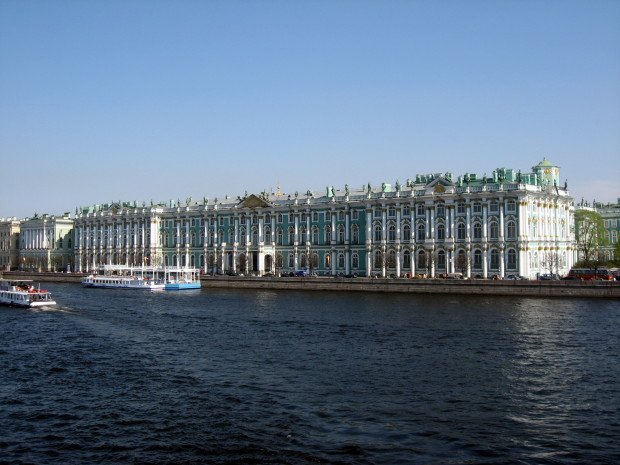
The Hermitage in St. Petersburg is the main treasury of Russia, in the literal and figurative sense of the word. In direct - because in the halls and storerooms of the museum there is a huge amount of priceless paintings, jewelry, sculptures and ceramics, which is not there! In a figurative way, because it reflects the culture and history of Russia and the whole world, this is a real book, or rather, a whole collection of works, but instead of a dry description of beautiful masterpieces, you can see them with your own eyes, it’s a pity you can’t touch.
The museum began in 1764 as a collection of paintings by Empress Catherine II the Great, who spent substantial sums to purchase paintings by brilliant European artists. Most of the paintings hung in the halls of the famous Winter Palace (the favorite residence of Russian emperors), which then received the name "Hermitage" (in French it means "a secluded place, shelter").
Initially, ordinary people could not admire the masterpieces - the museum was opened to the general public only in 1852. Anyone who has ever been to the Hermitage will remember it for the rest of their lives, because an absolutely incredible atmosphere reigns here, the luxury and magnificence of the halls of the palace will not leave anyone indifferent. Please note that for photo and video shooting you need to purchase a special ticket, and you can only take pictures without a flash.
10. St. Basil's Cathedral
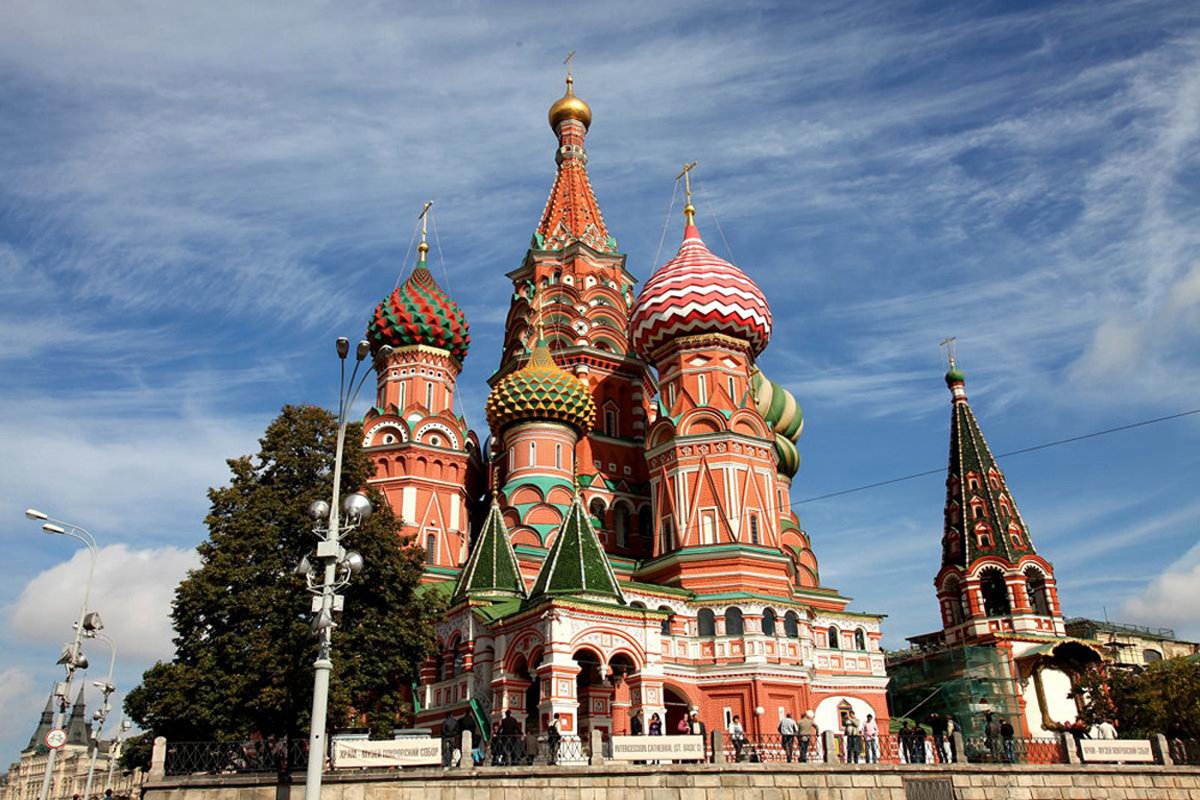
This unusual and amazingly beautiful temple is located in the center of Moscow, on Red Square. You will find a description of the cathedral in any tourist guide, but it is better to see it with your own eyes, because it is impossible to describe it in words. It looks like a huge fire burning in the heart of the Russian capital: when the bright Moscow sun plays on its multi-colored domes, this is an incomparable sight.
The cathedral was erected in 1555-1561 by order of Ivan IV the Terrible. According to legend, after the construction was completed, the cruel Russian Tsar ordered the architects Barma and Postnik to be blinded so that they could no longer build anything equal to this temple in beauty and grandeur. The king achieved his goal - in no corner of the world there is anything like this architectural masterpiece.
11. Red Square

A walk along Red Square is the first thing every foreign tourist should do in the Russian capital. The main milestones in the history of Russia are connected with this place, as evidenced by historical monuments - the Execution Ground, where Russian tsars executed troublemakers, criminals and rebels; a monument to Kuzma Minin and Dmitry Pozharsky, who led the people's militia at the beginning of the 17th century to drive the Polish occupiers out of Moscow; the mausoleum of V. I. Lenin and much more.
On Red Square, various events dedicated to state holidays and military parades were regularly held (and are being held), from here on November 7, 1941, Soviet soldiers went straight to the front.
By the way, in the old days the word “red” meant “beautiful”, and if you see the square with your own eyes, you will understand why it was called that.
12. Derbent

The unique city of the Russian Republic of Dagestan is not very popular among tourists, but it is worth visiting if only to walk the streets of one of the oldest inhabited cities in the world.
Derbent is famous for its true Caucasian hospitality and rich cultural traditions. Among the main cultural and historical attractions are the Derbent wall, which is about 1.5 thousand years old, and Naryn-Kala, an ancient fortress that once faithfully served as the defenders of the city. The oldest Muslim temple in Russia, the Juma Mosque, built in 733, is also located here.
Derbent cognac, which is made from Dagestan grapes, is also among the sights of the city. If you happen to get to Derbent, be sure to try it. Now it is the second largest city in Dagestan: the population is about 100 thousand inhabitants, most of whom are Lezgins, Azerbaijanis and Tabasarans.
13. Altai Mountains
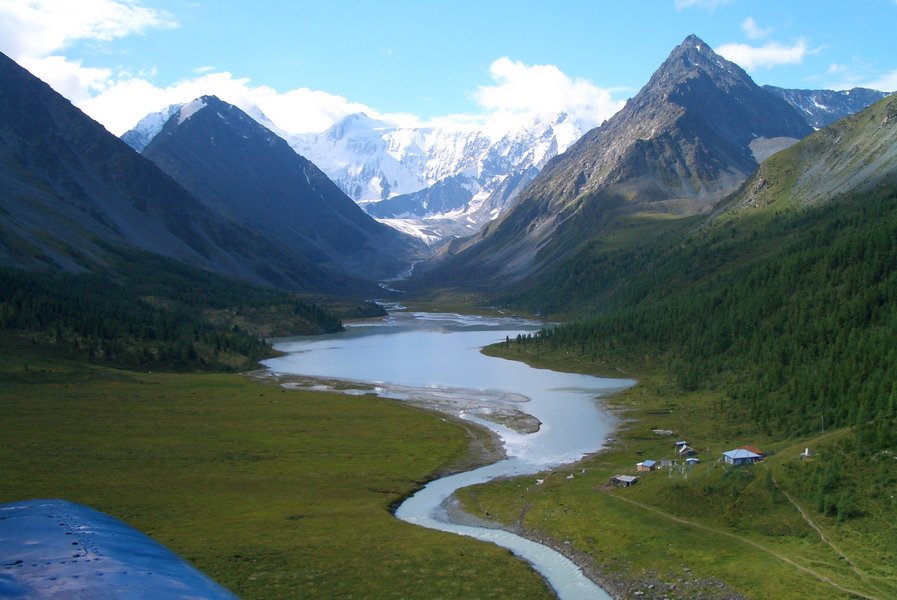
If you think that the most beautiful mountains on Earth are the Alps, then you have not been to Altai. This is the highest mountain system in Siberia, on its territory the borders of Russia, China, Mongolia and Kazakhstan converge, and unlike European mountain resorts, here not all the paths have been trampled by ubiquitous tourists.
The mighty and full-flowing Siberian rivers - the Ob, Irtysh and Yenisei - are born in the Altai Mountains, and in the amazingly beautiful valleys there are rare animals that you will not find anywhere else. There are many poachers here, with whom the authorities are trying to fight, but so far not very successfully, mainly because the officials themselves have been seen more than once in the extermination of unique representatives of the local fauna.
Since ancient times, original tribes and peoples have lived in Altai, somewhat similar to the Indians: they worship gods in the form of animals and practice pagan rituals.
